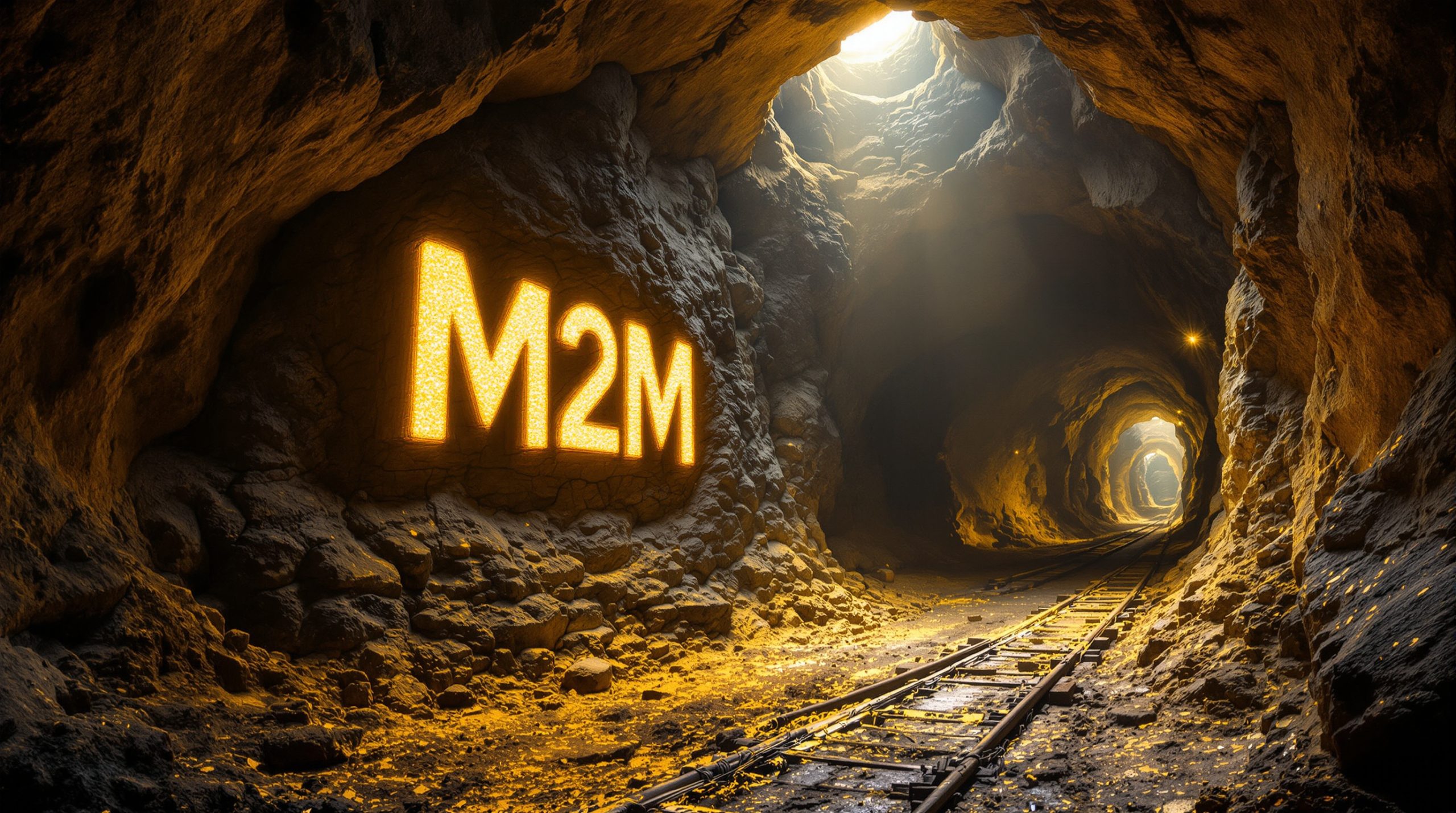Gold Strikes Gold: Castle Minerals Hits Strong Results at Bundi Prospect in Ghana
Castle Minerals (ASX: CDT) has delivered impressive gold intercepts at Fortitude North from its latest drilling program at the Bundi prospect within its Kpali Gold Project in Ghana, reinforcing the project's potential as an emerging West African gold district.
Bundi Drilling Highlights High-Grade Gold Zones
Recent reverse circulation (RC) drilling at the Bundi prospect has confirmed continuous gold mineralisation along strike and to depths of at least 100 meters, with evidence that mineralised zones are thickening with depth.
All five holes in the 552-meter program returned significant gold intercepts above 1.00g/t Au, including standout results of:
-
18m at 1.22g/t Au from 89m (25BURC003) including:
- 3m at 3.35g/t Au from 89m
- 3m at 1.77g/t Au from 101m
- 2m at 2.07g/t Au from 113m
-
7m at 3.26g/t Au from 114m (25BURC004) including:
- 5m at 4.34g/t Au from 114m including
- 2m at 9.46g/t Au from 117m
These results follow earlier significant historical intercepts from the prospect, including 1m at 51.03g/t Au from 168m, further highlighting the high-grade potential of the area.
"The Bundi RC drilling programme has bolstered the credentials of this prospect, just one of several within the broader Kpali Gold Project, and laid the foundations for follow-up RC drilling later in this Quarter," said Castle's Executive Chairman, Stephen Stone.
Strategic Gold District Emerging
The Kpali Gold Project sits at a geologically significant location where two major greenstone belts (Bole-Bolgatanga and Wa-Lawra/Boromo) converge with three regional-scale structures. This setting shares similarities with other major West African gold discoveries, including the 5.1Moz Namdini and 2.8Moz Black Volta Gold Projects in the region.
What makes this particularly compelling is that Castle Minerals' gold drilling results at Kpali are revealing all the hallmarks of a new West African gold camp in an area with no prior gold indications. The project's geological setting is directly comparable to Endeavour Mining's Assafou gold discovery in nearby Côte d'Ivoire, which rapidly advanced from initial discovery in 2018 to a 4.1Moz reserve by 2024.
Understanding Gold Mineralisation: What is Orogenic Lode-Style Mineralisation?
The gold mineralisation at Bundi and the broader Kpali Project is described as "structurally controlled, orogenic, lode-style mineralisation" – a term that requires some explanation for investors.
Orogenic gold deposits form during mountain-building events when gold-bearing fluids rise through major fault systems and deposit gold as they cool. These deposits typically form linear or "lode" structures that follow fault lines and can extend to significant depths – often hundreds of meters or more.
This style of mineralisation is responsible for many of the world's most productive gold mining districts, including those across West Africa's Birimian terranes. For investors, the key advantage of orogenic deposits is their potential for considerable vertical extent, meaning discoveries at surface can lead to substantial resources at depth.
At Bundi specifically, the gold appears within a sequence of altered sandstones containing quartz veining and disseminated sulphide minerals (pyrite, pyrrhotite, and chalcopyrite). The strong continuity of these mineralised structures enhances the prospect's economic potential.
Enhanced Targeting Capabilities
Castle Minerals has significantly boosted its exploration capabilities by acquiring high-resolution aeromagnetic data at no cost from a previous explorer in the region. This data, which would cost approximately US$1.5 million to acquire today, will undergo modern processing to enhance target generation across the project.
The company plans to leverage this data along with other datasets (VTEM, ground magnetics, geochemistry, drilling) to inform upcoming exploration campaigns, including:
- Auger drilling campaigns beginning in early August 2025 to extend existing prospects and generate new targets
- Follow-up RC drilling at Kpali and Bundi prospects scheduled for the September 2025 Quarter
"As we deepen our understanding of the project, our confidence in expanding mineralisation through focused, systematic exploration at Bundi and our other compelling targets is considerably boosted. High-resolution aeromagnetic data, recently acquired at no cost from a prior explorer, will substantially enhance this process," commented Stephen Stone.
Why Investors Should Watch Castle Minerals
Castle Minerals is strategically positioned in what could become West Africa's next significant gold district. The company's Kpali Gold Project shows several compelling investment attributes:
-
Proven Gold Discovery: Castle Minerals' gold drilling results show consistent high-grade gold intercepts across multiple prospects, demonstrating a functioning gold system
-
Prime Geological Setting: Located at the convergence of major gold-bearing structures in a region that has seen multiple major copper-gold discoveries
-
Systematic Exploration Approach: The company is employing a methodical exploration strategy, building on success with each program
-
Data Advantage: Acquisition of valuable aeromagnetic data at no cost provides a significant competitive edge in targeting
-
Regional Success Stories: Nearby discoveries like Namdini (5.1Moz) and Assafou (4.1Moz) demonstrate the potential for major deposits in similar geological settings
With West Africa continuing to deliver some of the world's most impressive gold discoveries (fifteen 2+ million ounce discoveries since 2012), Castle's systematic approach to unlocking the Kpali Gold Project could position it well for significant growth as exploration advances.
The West African Gold Opportunity
West Africa has emerged as one of the world's premier gold exploration regions over the past decade. The Birimian geological terrane that hosts Castle Minerals' gold drilling results at Kpali extends across several countries in the region and is responsible for numerous world-class gold deposits.
What makes West African gold deposits attractive?
West African gold deposits typically feature:
- Relatively consistent mineralisation that can be traced along strike and to depth
- Potential for both high-grade zones and larger volumes of moderate-grade material
- Amenability to various mining methods (open pit and underground)
- Generally straightforward metallurgy with good gold recoveries
Ghana specifically has a long history of gold production dating back centuries and remains Africa's largest gold producer. The country offers a stable mining jurisdiction with established mining codes and infrastructure.
As Castle Minerals prepares for its next phase of drilling following the rainy season, investors should watch for results from both the auger sampling programs and the follow-up RC drilling campaigns planned for later in 2025. Furthermore, companies like Metal Bank with its gold resource increase and Sunshine Metals' promising gold-silver findings demonstrate the continued excitement in the gold exploration sector across multiple regions.
Want to Know When the Next Major Gold Discovery Happens?
Don't miss potential investment opportunities like Castle Minerals' promising gold intercepts. Discovery Alert's proprietary Discovery IQ model provides instant notifications on significant ASX mineral discoveries, turning complex data into actionable insights. Explore how major mineral discoveries can lead to substantial returns by visiting Discovery Alert's dedicated discoveries page.




